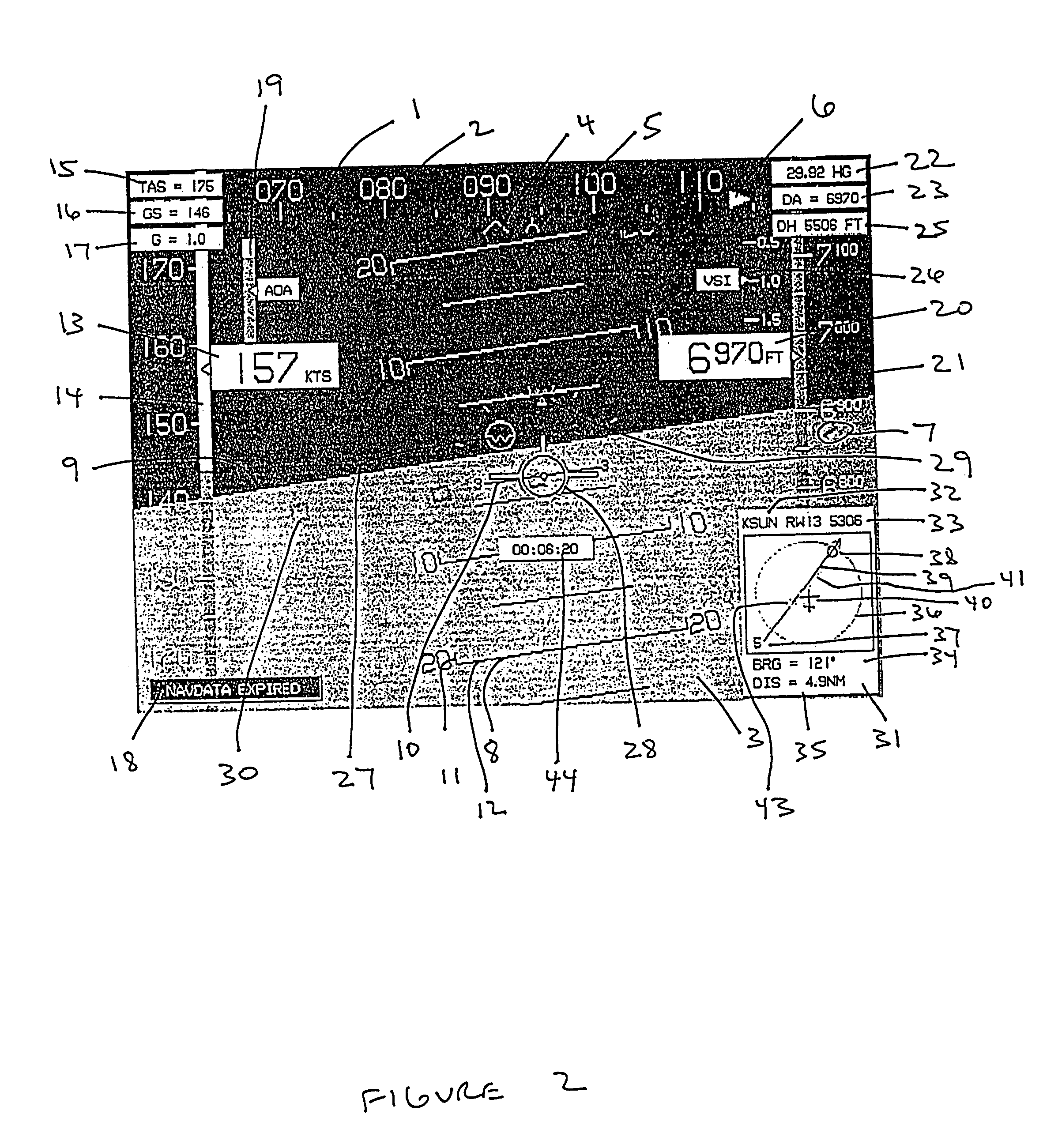Electronic flight instrument displays
a flight instrument and display technology, applied in the field of electronic flight instrument displays, can solve the problems of reducing the utility of the flight path marker, reducing the use of the primary flight display, and not further processing information based on, so as to reduce the cost, weight and power consumption, and enhance the pilot's situational awareness.
- Summary
- Abstract
- Description
- Claims
- Application Information
AI Technical Summary
Benefits of technology
Problems solved by technology
Method used
Image
Examples
Embodiment Construction
[0023]1. The Primary Flight Display
[0024]Referring now to FIGS. 1 and 2, the primary flight display of the present invention is disclosed. The primary flight display includes a heading scale 1 across the top. The heading scale is preferably aligned with magnetic North although it can also be aligned with true North. The digits 2 of the heading scale are spaced so that, at an aircraft roll angle of zero, the digits conform to the three-dimensional primary flight display background 3. The background 3 is generated from terrain elevation and obstruction elevation data stored in electronic memory. In the preferred embodiment, provision is made for the pilot to be able to selectively enable and disable terrain and obstruction rendering. In some cases, it is preferable to deselect terrain and obstruction rendering to enhance readability of navigation symbology. The heading scale 1 includes a heading carat 4 aligned with the longitudinal axis of the aircraft, and a track pointer 5 aligned ...
PUM
 Login to View More
Login to View More Abstract
Description
Claims
Application Information
 Login to View More
Login to View More - R&D
- Intellectual Property
- Life Sciences
- Materials
- Tech Scout
- Unparalleled Data Quality
- Higher Quality Content
- 60% Fewer Hallucinations
Browse by: Latest US Patents, China's latest patents, Technical Efficacy Thesaurus, Application Domain, Technology Topic, Popular Technical Reports.
© 2025 PatSnap. All rights reserved.Legal|Privacy policy|Modern Slavery Act Transparency Statement|Sitemap|About US| Contact US: help@patsnap.com



